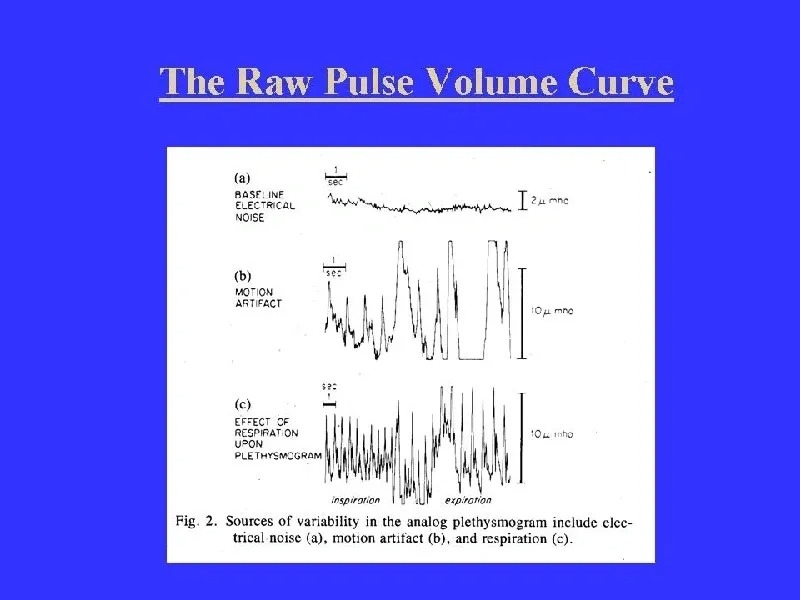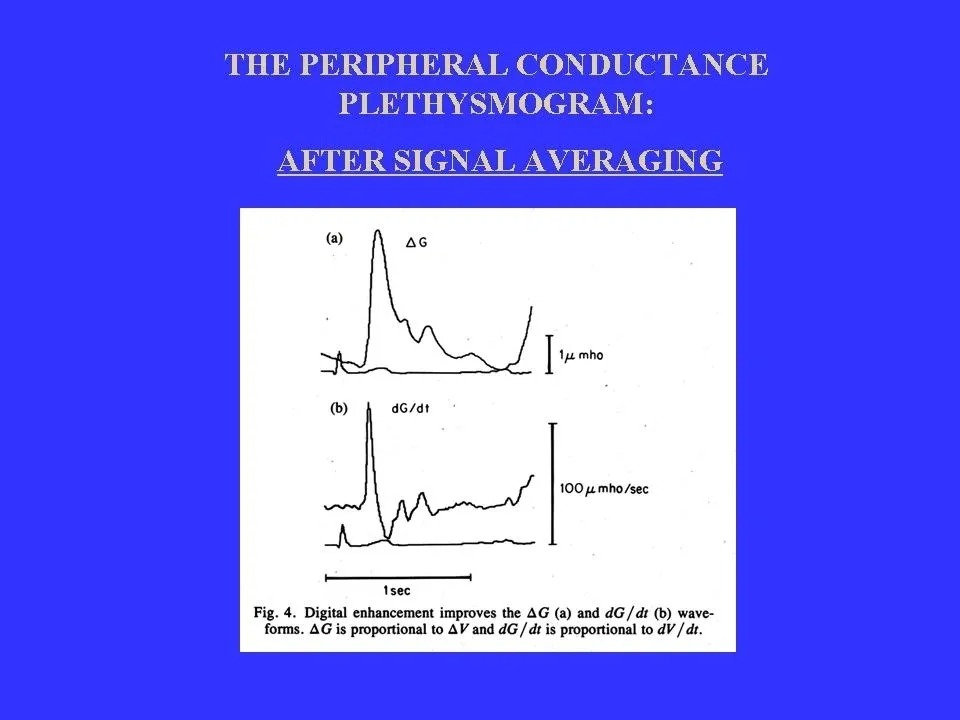
Peripheral Pulse Volume (PPV)
Peripheral Pulse Volume (PPV) is the small change in the volume of a portion of a limb that occurs when blood passing through a limb expands and contracts the arteries and arterioles Peripheral pulse flow (PPF) is PPV multiplied by heart rate. The limb is an electrical conductor whose electrical impedance changes with limb geometry and volume. This change in volume is very small, on the order of 1 part per 10,000 and is therefore normally obscured by electrical and mechanical noise see fig 2 below). “Plethysmographs” are devices that measure volume changes of a part of the body.
Marks LA. Digital Enhancement of the Peripheral Admittance Plethysmogram. IEEE Trans Biomed Engr. 1987;34(3):192‑198
plethysmographic waveform
Each time the heart beats, the volume of the limb segment changes, producing an impedance “plethysmographic waveform.” By applying signal processing techniques to this waveform, a highly reproducible pulse volume signal is generated.

